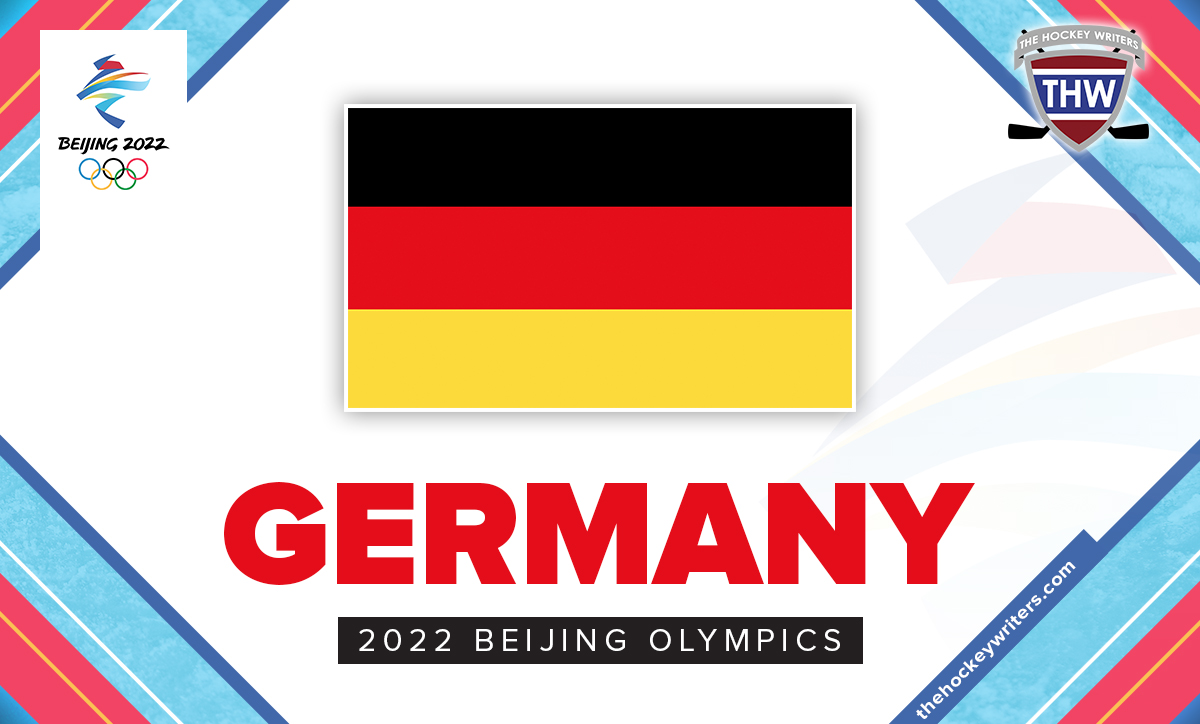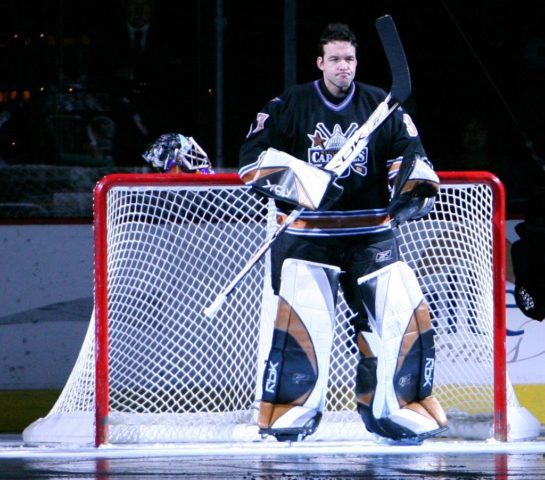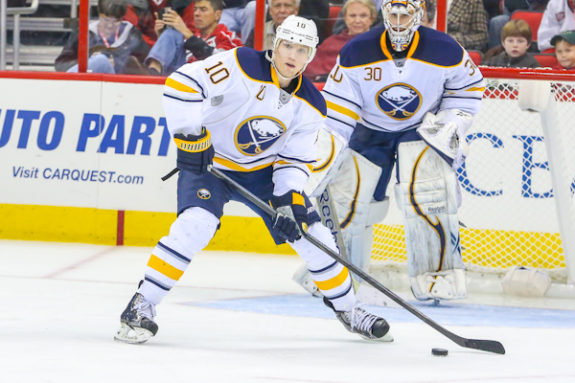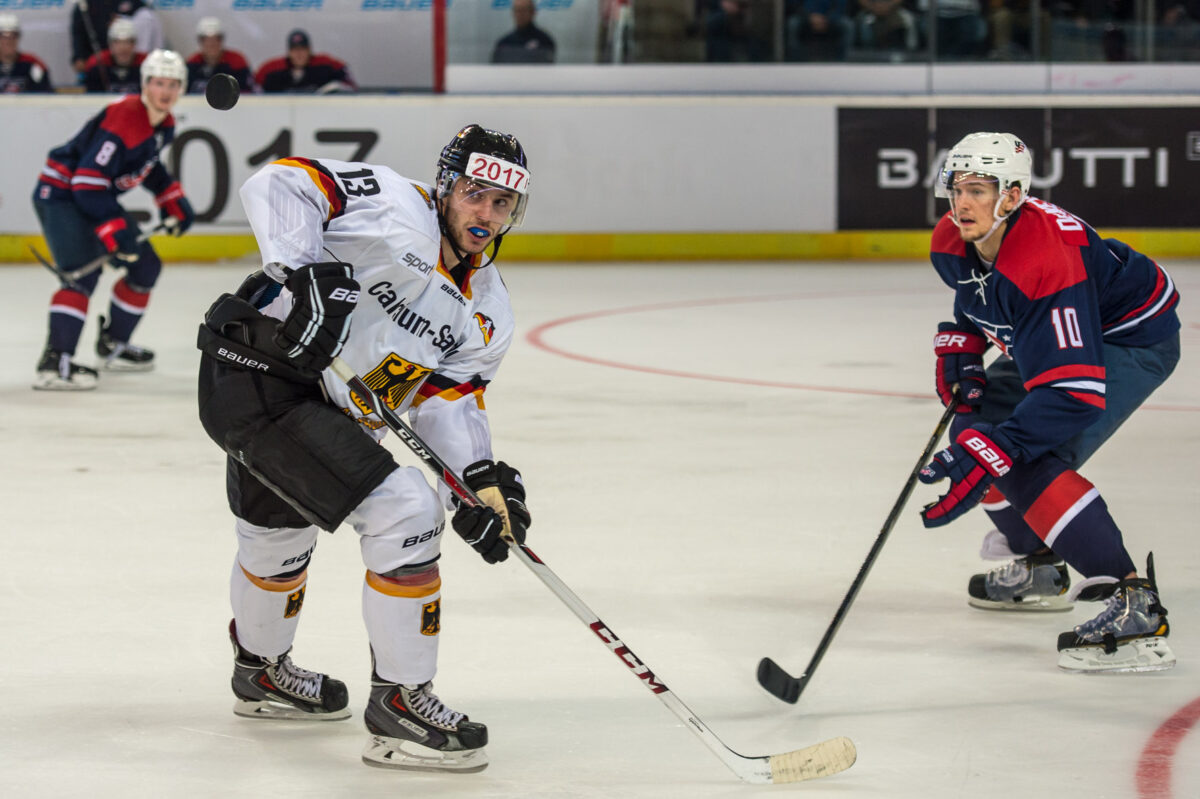If it weren’t for the NHL and NHLPA deciding to not allow their players to attend the 2022 Olympic Winter Games, Team Germany would have relied heavily on the likes of Leon Draisaitl, Tim Stutzle, and Moritz Seider. Instead, they’ll hope to replicate their 2018 Olympic Winter Game performance when they played in the gold medal game, losing to Team Russia in a thrilling overtime contest. Fans of the sport will get to see a similar team four years later, as the NHL officially withdrew from the competition on Dec. 22, 2021.

At the 2018 Olympics in Pyeongchang, a 29-year-old by the name of Patrick Hager led the team in scoring with three goals and seven points in seven games. At 33, he’s spent the last five seasons with Munich EHC of the Deutsche Eishockey Liga, and while he is not known for being a point producer, he came through for his country four years ago.
After a short stint in the NHL with the Chicago Blackhawks, Pittsburgh Penguins, Buffalo Sabres, and Edmonton Oilers, Dominik Kahun is now eligible to play at the Olympics, having signed a three-year contract with Bern SC of the Switzerland National League A after being cut by the Oilers. Kahun, then 22, finished behind Hager with two goals and five points, including a goal in the gold medal game.
It was the country’s first-ever silver medal, having only won the bronze medal twice (1932 – Lake Placid, 1976 – Innsbruck). At the International level, Germany has six silver medals and three bronze medals, however, their most recent finish on a podium came in 1953, at the World Championship in Switzerland.
Germany’s Hockey Program Continuing to Develop
While not known primarily for its hockey program, Germany has had its fair share of prime NHL talent. From former players, like two-time Stanley Cup winner Uwe Krupp and 1999-00 Vezina Trophy winner Olaf Kolzig, to current stars like Draisaitl and Tim Stutzle, they don’t produce NHL-calibre players often, but when they do, they’re dependable and serviceable. The typical build of a German player plays tough and doesn’t back down from a battle. They won’t run up the score, but they’ll do everything in their power to make sure the opposition doesn’t out-score them.
“… what Germany lacks in star names, it makes up for in team spirit and determination.”
Andy Potts, IIHF
At every position, you can see a theme among players. Whether it’s forwards like Draisaitl and Tom Kuhnhackl, defensemen like Dennis Seidenberg and Christian Ehrhoff, or goaltenders like Kolzig and Philipp Grubauer, they all played the game with a sense of pride, tough to beat and aggravating to play against. With a strong sense of team-minded play and always working collectively as a well-oiled machine, they’re at their best when they operate as one entity.
Related: Olaf Kolzig’s Life and Career with the Capitals
Aside from their 2018 silver medal win in Pyeongchang, Germany has finished on the podium just two more times. In 1932, they took the bronze medal, but in comedic fashion. During that time, they were one of only four teams to participate, the other three being Canada, the United States, and Poland. Poland finished 0-6, while Germany allowed 26 goals in six games. Then, in 1976, Germany would once again capture the bronze medal. On the final day of the tournament, they defeated the United States 4-1 while being represented as West Germany. While celebrating what they believed to be a fourth-place finish, they were informed that due to tie-breaking measures, they had won the bronze medal. To this day, it is considered one of the greatest moments in German ice hockey history.

The Germans have appeared in 20 Olympic Games to date, the earliest appearance occurring at the 1928 Olympic Games in St. Moritz. Coached by Erich Römer, the team would finish in 9th out of 11 teams participating before following it up with a bronze medal in 1932. Between 1936 and 1972, Germany placed no higher than fifth place until they captured bronze once again in 1976. After failing to finish higher than 5th from 1980 to 2010, the team failed to qualify for the 2014 Olympic Games in Sochi. Suffice to say, they bounced back in 2018, taking Team Russia to overtime in the gold medal game where they settled for the silver medal.
Interesting Facts About Team Germany & Its Players
- Of the 44 German players to have suited up in the NHL, only 19 have reached 100 games or more. Five players are currently playing and below 100 games.
- Draisaitl currently leads all German-born players in assists (334) and points (559). He’s appeared in 512 games, which is 400+ games less than Marco Sturm, who is second in points (487). Only he has more career goals than Draisaitl with 242, but that is very likely to change soon with Draisaitl currently at 225.
- Despite splitting into West Germany and East Germany in 1949, the two sides formed a united team in 1952, 1956, and 1960. They finished no higher than 6th place.
- They would reunite as one country in 1990, but would only reach the podium in 2018.
- While no German-born players are currently in the Hockey Hall of Fame, the IIHF Hockey Hall of Fame hosts 13 German players. Most notably is Krupp, who scored the game-winning goal to secure the 1996 Stanley Cup as a member of the Colorado Avalanche, defeating the Florida Panthers.
- The German National Team has one retired number; Robert Dietrich’s #20. Sadly, Dietrich was on board the Lokomotiv Yaroslavl plane that crashed in 2011, which took the lives of everyone on the flight.
- Finnish-born Toni Söderholm will take the role of head coach for the 2022 Olympic Games. He led the team in two World Championship tournaments, a 6th-place finish in 2019 and a 4th-place in 2021.
Germany’s Biggest Stars on the World Stage
With names like Draisaitl and Stutzle still waiting to make their names known on the Olympic stage, Germany’s biggest stars range from the likes of Kolzig, Ehrhoff, and Marcel Goc. Markus Egen is the country’s leader in goals (14) and points (16). He appeared in three Olympic Games (1952, 1956, and 1960), playing in 21 games. Stefan Ustorf leads all Germans in games played (24), having appeared in four Winter Olympics (1994, 1998, 2002, and 2006). He now serves as a German ice hockey executive and spent some of his playing time as a member of the Washington Capitals. For goaltenders, Ulli Jansen served in three Olympic Games (1956, 1960, and 1964), posting a 4-8-1 record in 13 games.

Much like in 2018, Germany will rely on a mix of players from the silver medal-winning team and youth who don’t have much experience on the international level. If the 2021 IIHF World Championship roster gives any indication on what Team Germany looks like, expect names such as Korbinian Holzer, Tobias Rieder, Matthias Plachta, and Lukas Reichel, along with many returning players from four years ago. It will be a great combination of injected youth and veterans who have seen the final stage of the Olympic Games, so expect the team to be just as competitive.
Where Will Germany’s Players Come From?
With just eight Germans playing in the NHL currently, the team had already planned to seek help elsewhere to fill out a roster and compliment the elite NHL talent. However, now that the NHL has taken themselves out of the Olympic Games, expect most (if not all) players to come out of the Deutsche Eishockey Liga, with perhaps the exception of Rieder, who currently plays in the Swedish Hockey League. Eisbaren Berlin’s leading scorer, Marcel Noebels, and Adler Mannheim’s Felix Bruckmann are just two of the notable players from the DEL who can come in and make an impact.

What once seemed like a stretch to believe Germany had a chance to finish on the podium is no longer the case. Entering the 2022 Olympic Winter Games, the team is full of aspirations to repeat the success of 2018 and capitalize on an equal playing field when they take on teams from other countries who are also tasked with icing a roster that holds no NHL talent. Being a team that is always tough to play against, never backs down, and is more than capable of battling through adversity, look for the German squad to be just as competitive as ever.